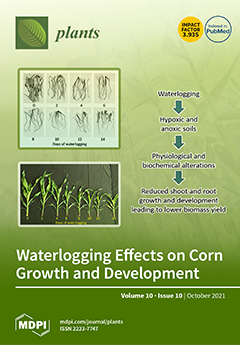Four halophytic plants,
Lycium shawii,
Anabasis articulata,
Rumex vesicarius, and
Zilla spinosa, growing in the central Qassim area, Saudi Arabia, were phytochemically and biologically investigated. Their hydroalcoholic extracts’ UPLC-ESIQ-TOF analyses demonstrated the presence of 44 compounds of phenolic acids, flavonoids, saponins, carbohydrates, and fatty acids chemical classes. Among all the plants’ extracts,
L. shawii showed the highest quantities of total phenolics, and flavonoids contents (52.72 and 13.01 mg/gm of the gallic acid and quercetin equivalents, respectively), along with the antioxidant activity in the TAA (total antioxidant activity), FRAP (ferric reducing antioxidant power), and DPPH-SA (2,2-diphenyl-1-picryl-hydrazyl-scavenging activity) assays with 25.6, 56.68, and 19.76 mg/gm, respectively, as Trolox equivalents. The hydroalcoholic extract of the
L. shawii also demonstrated the best chelating activity at 21.84 mg/gm EDTA equivalents. Among all the four halophytes, the hydroalcoholic extract of
L. shawii exhibited the highest antiproliferative activity against MCF7 and K562 cell lines with IC
50 values at 194.5 µg/mL and 464.9 µg/mL, respectively. The hydroalcoholic extract of
A. articulata demonstrated better cytotoxic activity amongst all the tested plants’ extracts against the human pancreatic cancer cell lines (PANC1) with an IC
50 value of 998.5 µg/mL. The
L. shawii induced apoptosis in the MCF7 cell lines, and the percentage of the necrotic cells changed to 28.1% and 36.5% for the IC
50 and double-IC
50 values at 22.9% compared with the untreated groups. The hydroalcoholic extract of
L. shawii showed substantial antibacterial activity against
Bacillus cereus ATCC 10876 with a MIC value of 12.5 mg/mL. By contrast, the
A. articulata and
Z. spinosa exhibited antifungal activities against
Aspergillus niger ATCC 6275 with MIC values at 12.5 and 50 mg/mL, respectively. These findings suggested that the
L. shawii is a potential halophyte with remarkable biological properties, attributed to its contents of phenolics and flavonoid classes of compounds in its extract.
Full article






